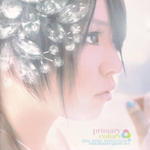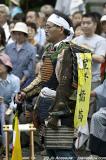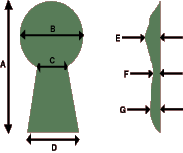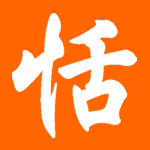| |
| |
|
|
|
| |
|
Japan - Physical Map & Climate
|
|
|
|
|
Climate
The isle of Japan stretches from a frigid climate zone to the subtropics. To demonstrate this wide spectrum of climates, we have only to look at Okinawa island. While having some of the prettiest beaches in the world and a US military base, summer temperatures consistently rise above 100 degrees with great humidity. Jumping to lower Honshu, the main land, Japan’s 3rd largest city Osaka experiences a drier heat but also torrential rain during monsoon season. Tokyo, home to 12.4 million and about as many neon lights, gets the brunt of every natural occurrence – minor snow, excessive heat, monsoons, and major earthquakes. In 2004, a Tokyo summer was hotter than an Okinawan one, measuring 109 degrees without the humidity index. And last, Sapporo, host of the 1972 Winter Olympics, gets around 45 inches of snow dumped in a space of two months putting its precipitation on par with Milwaukee, WI and Munich, Germany.
|

|
|
|
|
|
|
|
|
|
|
|
J-Pop
One of the key cultural phenomenon of the 90s and today has been the popularity of J-Pop on the music scene. J-Pop has only just recently begun to add rap under its umbrella and since the 90s has been centered more on popular male artists. J-Pop is a classification based on the rock sounds of the 60s and 70s from Japan, Europe, and America mixed with club beats of contemporary society. Singers focus on certain topics like love and betrayal without fixating on societal problems. J-Pop has brought New Wave groups of the 1980s and City Pop, club beats from big cities, under one heading. Current stars of this genre topping the charts are Orange Range and Ketsumeishi. If we were to duck into a Japanese music store today, there would be four main sections of music on the shelves: Enka (a native ballad form), classical, International, and J-Pop.
|

|
|
|
|
|
|
|
|
 Although samurai is a word that popularizes Japanese “warriors” in pre-industrial Japan, samurai were not always warriors. In certain periods, they were farmers and in others, intellectuals. The tie that binds samurai from all centuries together is the “code” – a code of responsibility for those with an inferior status and of respect and honor for those of equal or higher rank. In times of disunity like the 1500s, samurai were known for their martial arts prowess. Sent out on special missions by upper samurai, the average samurai gained prestige (but not class) when successful. When not so successful, a sword stroke through the stomach and then one to decapitate (hara-kiri) would do the trick to save face. While our contemporaries may go out to a restaurant or bar to relax, samurai attended Kabuki theater. In later times, kabuki was a highly ritualized dance/play/mime with extravagant costumes played by only males. Before they were banned, women performed eroticized versions of Kabuki.
Although samurai is a word that popularizes Japanese “warriors” in pre-industrial Japan, samurai were not always warriors. In certain periods, they were farmers and in others, intellectuals. The tie that binds samurai from all centuries together is the “code” – a code of responsibility for those with an inferior status and of respect and honor for those of equal or higher rank. In times of disunity like the 1500s, samurai were known for their martial arts prowess. Sent out on special missions by upper samurai, the average samurai gained prestige (but not class) when successful. When not so successful, a sword stroke through the stomach and then one to decapitate (hara-kiri) would do the trick to save face. While our contemporaries may go out to a restaurant or bar to relax, samurai attended Kabuki theater. In later times, kabuki was a highly ritualized dance/play/mime with extravagant costumes played by only males. Before they were banned, women performed eroticized versions of Kabuki.
Western literary and movie industry magnets have given much attention to the “geisha.” To understand how the idea of an eroticized female came to fruition in such a stratified society, we must look into the years 1625 to 1725. Japan then was a closed world in every sense. The Tokugawa regime did everything in its power to maintain the status quo,which is to say, they clamped down on opposition to harness central power. The merchant class remained stagnant but accumulated wealth. Almost as a release valve, the government licensed ukiyo (pleasure) centers in Tokyo, Osaka, and Kyoto for non-samurai townspeople. It was in these ukiyo that an erotic atmosphere flourished alongside of a strict, moral way of life. Not only did the merchant class gain status - culture also blazed in the form of bourgeois prose and art reflecting the “floating, dirty, world” that Buddhists and Confucians alike despised.
It is not fair to link the current Japanese governmental military policy, decided on by PM Yasuo Fukuda, to the orders of the militarist clique of pre-war World War II. However, it is interesting to see how Asian countries, specifically China, have reacted to the slightest active position of the Japanese military recently. It is as if the wounds of atrocities in Nanjing and Shanghai in the 1930s and 1940s are fresh. Protests sounded in Beijing when recent former PM Junichiro Koizumi visited a Japanese war shrine. China even breathed a sigh of relief when Fukuda decided to bring Japanese troops home from Iraq even though the latter’s role was extremely minimal in the war.
|
|
|
|
|
|
|
| |
|
Shinto, Buddhism, Confucian beliefs and more!
|
|
|
|
|
 Shinto
According to the Agency for Cultural Affairs in Japan, the majority of Japanese people participate in both Shinto and Buddhism religions. Rooted deeply in the Japanese traditions, Shinto practitioners seek to ask guidance from kami – gods found in the national world. The religion does not have scripture nor much dogma. Japanese seek solace in the kami on weddings, New Year’s, and other holidays. Funerals are ceremonies performed in Buddhist manner. Although observances vary, the deceased is usually cremated and then his or her bones are selected and passed to family members by chopsticks. Male or female priests give rites and then the deceased’s family take the urn home for 35 days while incense is lit at all times. After this period, the urn is returned for burial. Japanese visit their loved ones on a special holiday called Obon.
Shinto
According to the Agency for Cultural Affairs in Japan, the majority of Japanese people participate in both Shinto and Buddhism religions. Rooted deeply in the Japanese traditions, Shinto practitioners seek to ask guidance from kami – gods found in the national world. The religion does not have scripture nor much dogma. Japanese seek solace in the kami on weddings, New Year’s, and other holidays. Funerals are ceremonies performed in Buddhist manner. Although observances vary, the deceased is usually cremated and then his or her bones are selected and passed to family members by chopsticks. Male or female priests give rites and then the deceased’s family take the urn home for 35 days while incense is lit at all times. After this period, the urn is returned for burial. Japanese visit their loved ones on a special holiday called Obon.
|
|
|
|
|
|
|
|
|
Confucianism made its way to China through Korea. Among its most principle values is filial piety – or a son and daughter’s duty to respect his or her elders. This notion of loyalty was seen as a larger scale when the Emperor was at the top of the pyramid. In many eras, Emperors’ used Confucianism as a means to check Buddhist growth in power. Christmas is an odd celebration in Japan given that under 2% of the nation is Christian. Much like America, retail stores delight in the celebration and decorate their stores with lights and a Christmas tree. Families have a special holiday treat, strawberry sponge cake with whipped cream.
|
|
|
|
|
|
|
|
|
|
|
|
|
|
 The first unification of Japan is known as the Kofun Period. Kofun (mounds) were found in intriguing key-hole shapes buried with the corpse of royal descent. The Three Imperial Regalia – a mirror, sword, and curved jewel – were found inside these mysterious tombs. We only know of the unification of the Wa (proto-Japanese) people through secondary Korean writings. Starting in the period of 300 AD, the Wa begin to interfere in the military affairs of the Korean peninsula. As the era continued, Japan received two main imports from Korea and China: Buddhism and kanji (the Chinese writing system).
The first unification of Japan is known as the Kofun Period. Kofun (mounds) were found in intriguing key-hole shapes buried with the corpse of royal descent. The Three Imperial Regalia – a mirror, sword, and curved jewel – were found inside these mysterious tombs. We only know of the unification of the Wa (proto-Japanese) people through secondary Korean writings. Starting in the period of 300 AD, the Wa begin to interfere in the military affairs of the Korean peninsula. As the era continued, Japan received two main imports from Korea and China: Buddhism and kanji (the Chinese writing system).
The second unification of Japan took place in 1333 to 1336 with a centralized governmental system put into place by the Ashikaga regime in Kyoto. For centuries, samurai adhered to assignment and property laws of their local lord or daimyo. In exchange for military and other duties, daimyo gave out land to samurai, the samurai’s sons, to their sons’ and so on and so forth. With so much parcellized land being divided, constant strife broke out during previous regimes. The Ashikaga government and the local daimyo institutionalized a tax system, police and military force, and a court system.
In the section labeled “Samurai Culture,” we have seen how after much civil war, the samurai were given a class of their own. Toyotomi Hideyoshi, a historical leader still revered today as a Shinto god, accomplished the stratification of society as a means to keep the reigns of national power. A man of great physical power and edifying personality, Hideyoshi sought to realize the great dream of a unified Japanese Asia. In 1592, two years after assuming power, Hideyoshi conquered Korea but was soon to die in 1598. Japanese still accredit Hideyoshi for the final unification of Japan.
|
|
|
|
|
|
|
|
 Nihongo
The four writing styles of the Japanese language are kanji, hiragana, katakana, and the Roman alphabet (romaji). Except for the Roman script, Japanese use iconographs (small pictures) to express themselves in writing. Kanji uses the most elaborate iconographs and is an import from China around the first unification of Japanese. While maintaining the design, the pronunciation of kanji differs from its Chinese counterpart. Hiragana, a cursive alphabet, is the building block of the Japanese language. Katakana, is an alphabet with the same sounds as Hiragana but writes with a clearer script. Japanese utilize Katakana for loan words not in the Japanese vocabulary and it was originally the script of Buddhist scribes. Japanese pronunciation is relatively easy but the written language is extremely cumbersome for Westerners who are used to the ABCs.
Nihongo
The four writing styles of the Japanese language are kanji, hiragana, katakana, and the Roman alphabet (romaji). Except for the Roman script, Japanese use iconographs (small pictures) to express themselves in writing. Kanji uses the most elaborate iconographs and is an import from China around the first unification of Japanese. While maintaining the design, the pronunciation of kanji differs from its Chinese counterpart. Hiragana, a cursive alphabet, is the building block of the Japanese language. Katakana, is an alphabet with the same sounds as Hiragana but writes with a clearer script. Japanese utilize Katakana for loan words not in the Japanese vocabulary and it was originally the script of Buddhist scribes. Japanese pronunciation is relatively easy but the written language is extremely cumbersome for Westerners who are used to the ABCs.
|
|
|
|
|
|
|
| |
|
ITTADAKIMASU!!!!!!!!!!!!!!!!!!!!!!!
|
|
|
|
|
ENJOY YOUR MEAL!!!!!!!!!!
One of the great things about Japan is the vast selection in cuisine. We should not generalize about Japanese eating only rice and fish. Rice is a breakfast stable and side dish for lunch and dinner but there are several options for vegetarian, meat, and noodle lovers in the diet. A typical breakfast in Japan consists of rice with a raw egg or a natto concotion. Native Japanese consider natto – a bean curd mixture – to be quite out of the ordinary for Western palettes. Sushi and sashimi are popular dishes in America and Japan. Tempura, introduced by the Portuguese, is now considered a native dish. A quite tasty lunch treat in certain areas (like Osaka) is okonomiyaki – a pancake and pizza mix with the choice of veggies, meat, or seafood in the mix.. A main delicacy is fugu (pufferfush) – if not cut right, it can cause death (a rare occurrence). Tokyo restaurants serve up this meal at a rate of 400 USD a plate!
|
|
|
|
|
|
|
|
|
| |
|
|

